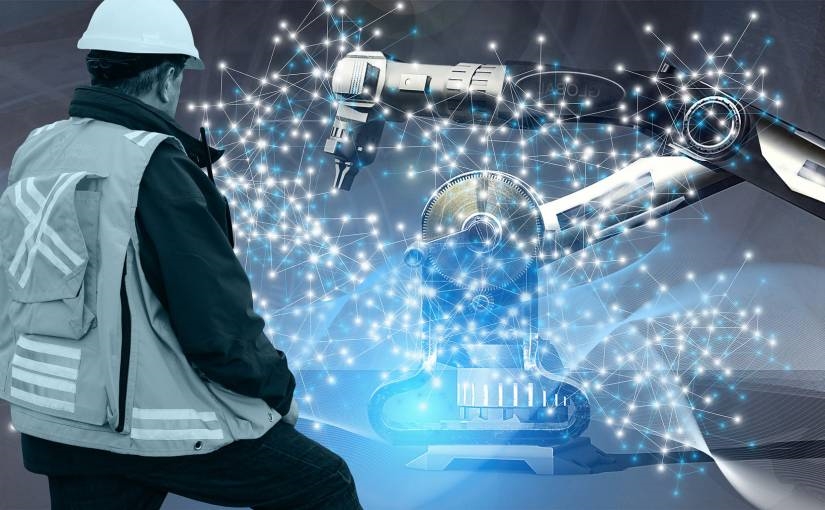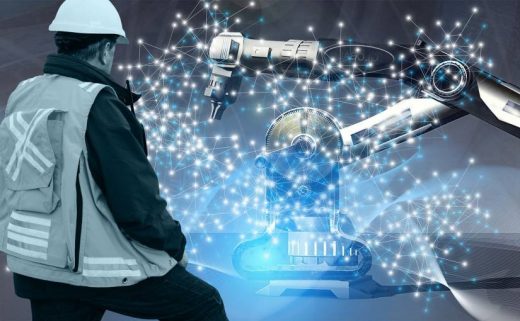How IoT Supercharges the Covid-19 Recovery
How IoT Supercharges the Covid-19 Recovery

It’s safe to say this decade has gotten off to a rocky start. The 2020s were presumed by most experts to be defined by the fourth industrial revolution, or the coming future of work, or the rapidly-shifting business landscape. The novel coronavirus had other ideas. Instead, employers have been suddenly confronted with little supply or demand, while employees have often been told they cannot leave the house let alone return to work.
The “new normal” is, unfortunately, here for the foreseeable future.
Nonetheless, I want to remind people that there is light at the end of the tunnel even when it feels like this pandemic is set to drag on forever. For every downturn, there is an inevitable upswing, and the Internet of Things (IoT) holds great promise for the post-pandemic world. Believe it!
The current crisis – one which insists upon shelter in place orders and social distancing – plays to the strengths of remote devices.
Asset tracking, inventory management, and condition-based monitoring at the click of a button are all set for greater long-term investment to build better and safer businesses. Similarly, IoT enables employees to get back to work with fewer risks or perform their tasks safely from home.
The technology’s long-term prospects will only improve as it helps a variety of industries to better overcome manufacturing shut-downs and supply chain interruptions. However, it is important to note that any uptick to connected devices within business operating models will need to address underlying security concerns. Let’s explore why, when integrated conscientiously, connected devices offer a way out of this crisis.
Back up to speed
International business is scrambling to get safely back to work after four months and counting of shutdowns, limited supply, and stifled demand. If time is money, as the old adage goes, then it is understandable why business big and small is so keen to come back online. As a result, many are turning to connected devices to continue production in accordance with health guidelines.
Connected Devices
Remote asset management powered by connected devices, for example, is increasingly working to monitor machinery without people on the ground. Microsoft Azure offers remote IoT monitoring solutions that are transforming the capabilities of manufacturing companies across the world by allowing teams to collect vital data from multiple remote devices, visualize this information on a dashboard, and respond accordingly to alerts.
IoT devices in the supply chain, meanwhile, allow teams to remotely access information that they need to track shipments, monitor their inventory, prevent theft or damage, and anticipate future inefficiencies. IoT sensors in this context deliver data to team members in distributed locations, enabling them to take immediate action to keep everything running smoothly.
Remote security solutions are working to care for the workers who are back on duty. A variety of IoT “things” are available for the workplace to ensure adherence to social distancing guidelines, such as cameras and sensors that detect body temperature, crowd density, or if people are wearing facemasks.
Amazon, for example, is using smart cameras backed by AI to detect whenever warehouse workers come too close to one another.
Back on the job
Connected devices not only help workplaces get back up to speed but allow employees to get on with the job. Tech is enabling things that even 10 years would not have been possible to carry out remotely. From hearing aids (widex dot pro) that can be calibrated by health professionals from anywhere on earth.
There are also, applications that help family members and caregivers to monitor elderly loved ones from afar, and connected devices that are helping essential workers to perform their duties while protecting the most vulnerable.
For the general worker, there has been a massive move to the remote thanks to IoT interconnectivity.
More people than ever before are working from home and enabling businesses to function despite the hurdles imposed by the pandemic. Interestingly, this trend looks here to stay regardless of the pandemic. Remote workers are proving to be effective collaborators, productive workers, and more flexible in their work-life balance.
In fact, 74 percent of CFOs surveyed by Gartner expect at least some of their employees to continue working from home after isolation measures are lifted.
There is a case to be made that more remote workers will result in better device performance. Employees around the world are getting so used to real-time interaction like video conferences and online calls that it is reasonable to predict that consumers will soon expect this from their connected devices.
In this sense, low latency will be integral to improve – especially as research shows there is only a window of 0.1 of a second if device designers want their “users to feel like their actions are directly causing something to happen on the screen.”
Back to reality
Connected devices are helping workplaces to continue processes from afar and empowering employees to keep working from wherever they choose. These are major benefits during a health crisis which restricts movements and interactions. Thus, it is clear that connected devices are set to play an important role in restarting the global economy in the face of this pandemic.
However, the move toward more devices in the workplace must occur simultaneously with the move toward better security protocols. Research indicates that 57% of IoT devices are vulnerable to attack. Given the tendency of large scale crises to result in increased cyberattacks, it’s more important than ever to ensure the security of cloud networks and IoT devices.
Any increase to remote workers should sound alarm bells for CTOs.
As previously written on ReadWrite, managers in a conventional office setting enjoy automatic oversight of employee behavior.
The oversite protection is all but removed when people work from home and engage in cybersecurity practices that are less than safe. This rise of “shadow IT” – the use of IT-related hardware or software by a department or individual without the knowledge of IT within the organization – presents security challenges since team members can accidentally expose private data.
Private data hacks are proving to be an issue for organizations big and small, public and private.
In a recent alert, the Cybersecurity and Infrastructure Security Agency (CISA), the cyber division of the US Department of Homeland Security, urged remote employees to secure “devices being used to remote into work environments with the latest software patches and security configurations.”
The only way companies will overcome the flaws of IoT security is to protect devices and users from the ground up. Organizations must develop enterprise-wide frameworks to minimize exposure to new attack vectors and implement end-to-end security. They should also implement security guidelines and standards, as well as staying on top of device updates and testing.
Ultimately, businesses should make “Secure by Design” practices an organic part of their IoT system infrastructure in order to ensure security from day one. For manufacturers and other industries, it is best to apply an assembly line approach to cybersecurity.
The assembly line approach to cybersecurity means having a strategy for each part of the onboarding process, from education to frequent testing to network segmentation to device fencing. While such security protocols might be costly for companies, the reputational and bottom-line damage from hacking could be far more expensive.
Look at the positives.
Overall, the positives far outweigh the negatives in further integrating connected devices during times like these. The International Monetary Fund reports that there is “an uncertain recovery” ahead due to the one-two punch of an economic downturn during a health crisis.
For their part, connected devices help to return some certainty to this economic recovery by empowering employees and employers to get on with their working lives in this turbulent start to the decade.
The post How IoT Supercharges the Covid-19 Recovery appeared first on ReadWrite.
(53)


